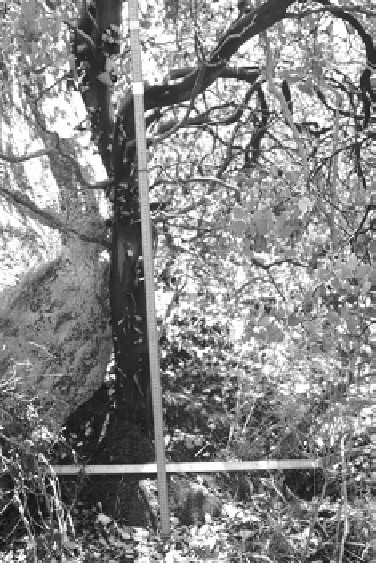Agriculture Reference
In-Depth Information
Fig. 9.9
Monopodal growth form of resprouting
Arctostaphylos rainbowensis
from California
chaparral with 50-cm diameter lignotuber; meter stick for scale. (Photo by Jon Keeley.)
seeding shrubs have much higher photosynthetic rates than resprouters, lower leaf
area indices, higher photosynthetic compensation points and lower shade toler-
ance (Parker
1984
;Verdu´
2000
; Ackerly
2004b
). Resprouters and obligate seeders
represent very different character syndromes and simple measurements of height
alone are unlikely to explain competitive advantages associated with regeneration
mode (Givnish
1988
).
Although no doubt a non-resprouter height advantage has selective value in
some environments, for example loss of resprouting has been implicated as a
trade-off for height growth in
Eucalyptus regnans
by Waters
et al.
2010
,itis
not the broad geographical explanation for the evolution of the non-resprout-
ing mode these authors have suggested. If a competitive height advantage were
the main driver behind evolution of non-resprouting, one would expect this to
increase along a resource gradient where shrub density increases. However, in
MTV shrublands under various climatic regimes, resprouters dominate as
resources increase and non-resprouting seeders become more important on
open semi-arid sites where competition for height is of much less importance
(Keeley
1986
; Clarke
et al.
2005
; Pausas & Bradstock
2007
).
(5) Frequency of fire and other disturbances has been proposed to be a wide-
spread factor controlling the selective balance between resprouters and non-
resprouting seeders by Bellingham & Sparrow
2000
. According to their model,

